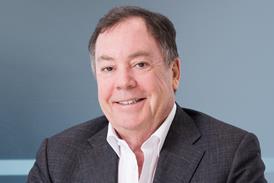(We ran a feature on line-fed security systems...)
"Line-fed security cameras should be the answer to an installer's prayer. One coaxial cable does everything, carrying the video signal from the camera to the control unit and monitor, and the power supply from the control unit to the camera. No need to worry about local availability of mains supplies, or routing extra cables. Installation time is reduced, along with costs and effort. And subsequent fault-finding should be that much simpler. But that's only part of the story; the same cable can also be coaxed into carrying an array of other signals, in both directions. These can include multiplexed two-way audio and telemetry for alarm triggers or control pulses to operate pan/tilt heads, zooms and focusing systems.
However, you hardly need telling there's no such thing as a free lunch – especially in the CCTV business – and there are a number of trade-offs to bear in mind when contemplating a line-fed system."
Tester perks
(In a Bench Test of a new dual technology detector, our tester confessed to one of the perks of the job ...)
"One of the perks of testing security equipment for Security Installer is the historical perspective gained as new techniques unfold. It was not so long ago that we were marvelling at the introduction of the PIR and Microwave volumetric detectors and their advantages over other simpler detectors and, soon after that, at the range of facilities provided by the introduction of the microprocessor into control panels. Now we have the next step – a dual technology PIR/Microwave volumetric detector under microprocessor control. At around £64 + VAT, the NAPCO M7100 price seems a bit daunting, but you will certainly get good value for the money."
Keeping pace with distributors
(In a feature about the role of security distributors, Anton Jackson of Alert Security Supplies likened the business to running a marathon...)
"Recently a friend of mine ran the London Marathon, and he was telling me that the hardest thing in all the excitement was to keep his pace measured and steady, and not run too quickly in the early stages. Other competitors sprinted away and did well for the first few miles before falling by the wayside.
"Distributors are like Marathon runners; pace is vital and it is important not to become carried away with the excitement. Response to competition is measured, and it is important to recognise the attributes that will see you through the next miles, rather than making you a temporary star in this one."
Throwing light on the subject
(Alan Frost, an ECA technical inspector, wrote about emergency lighting systems for security installers...)
"One of the most important and neglected criteria affecting the level of illumination is the amount of light that is reflected from building surfaces, such as walls, floors and ceilings. Therefore, before designing any system, account should be taken of the reflectivity of those surfaces. Obviously, buildings such as discotheques and restaurants may have dark-coloured walls and ceilings introduced deliberately to create an ambiance and will therefore require more emergency lighting luminaires than, say, a white-painted corridor.
"It is important also to ensure that there is a uniformity of illumination. This will avoid abrupt changes in the level of lighting from one area to another. More low output sources are usually better than one high output."
Source
Security Installer



















